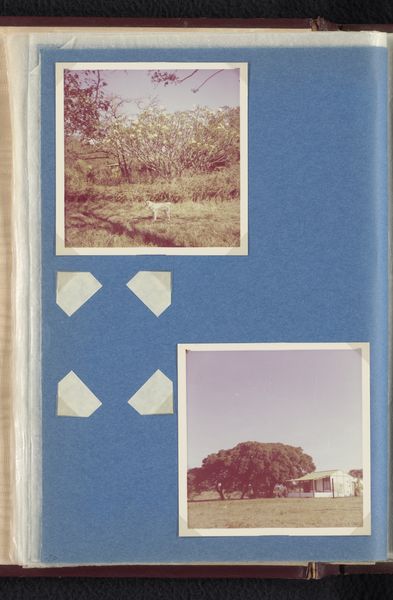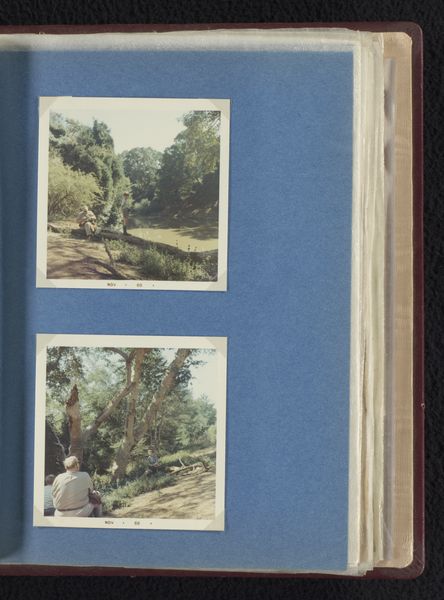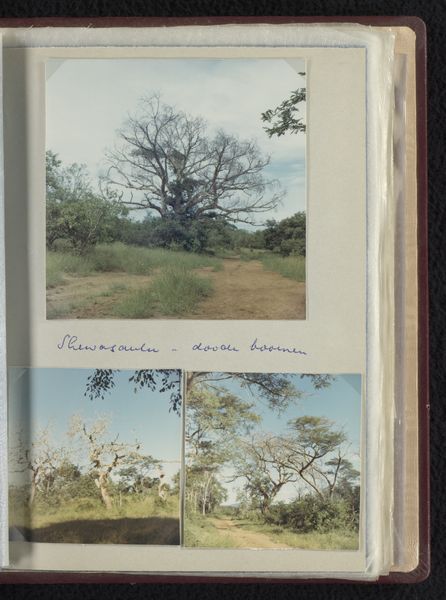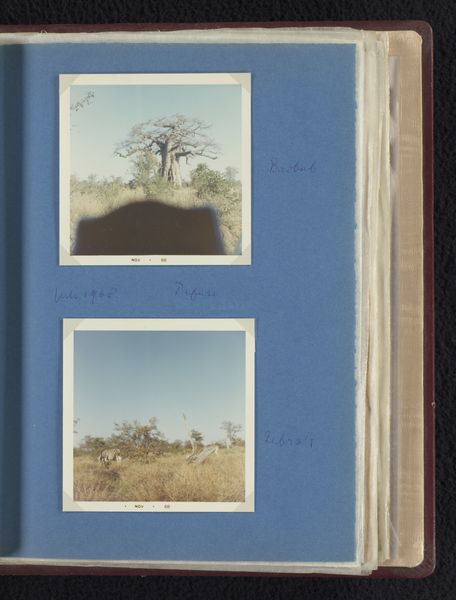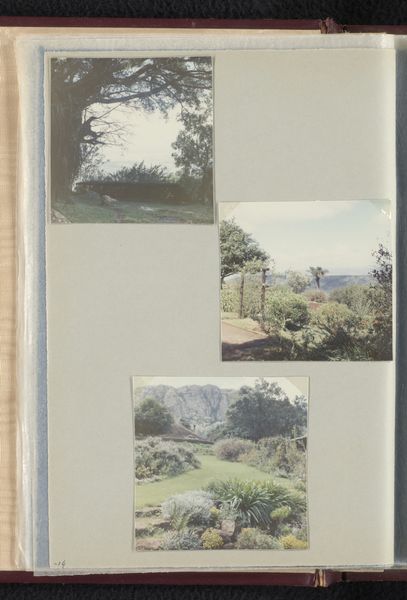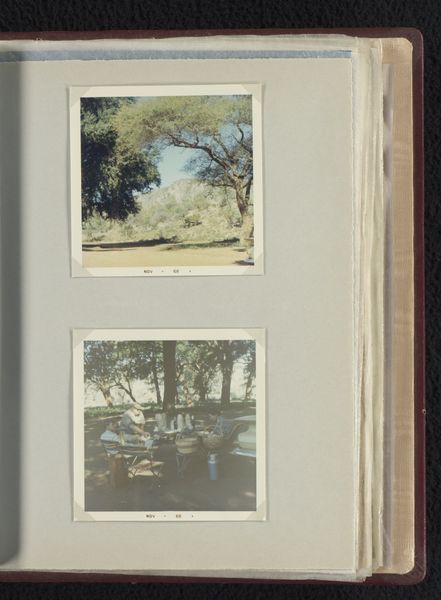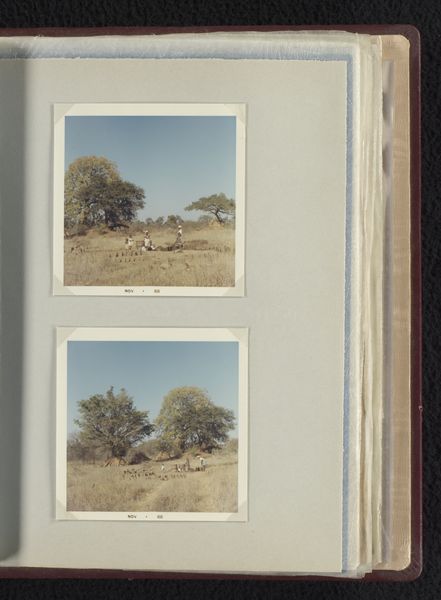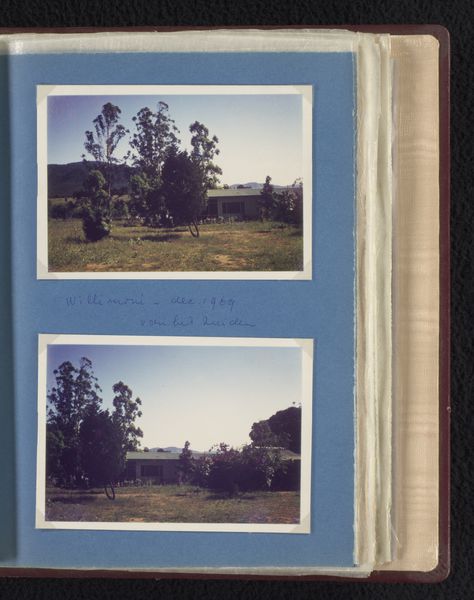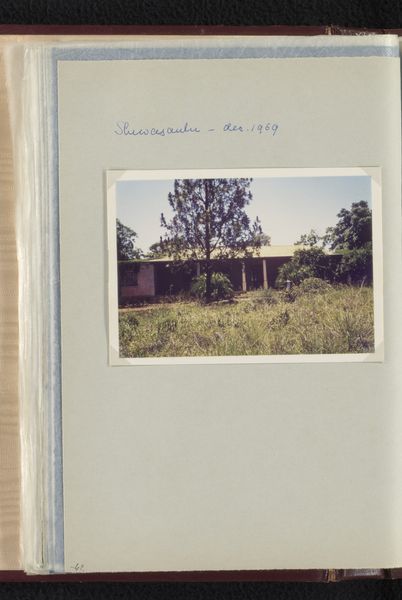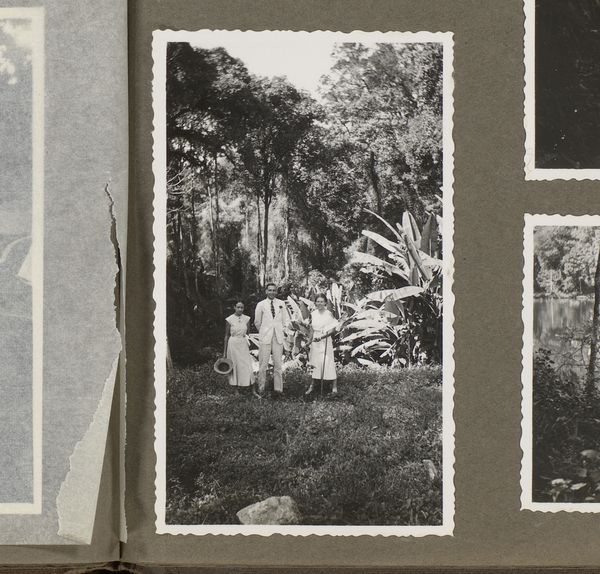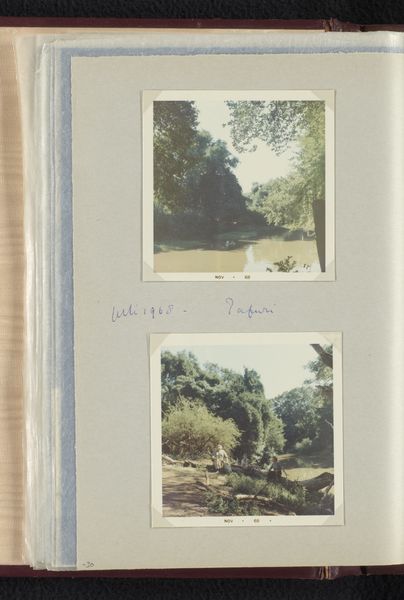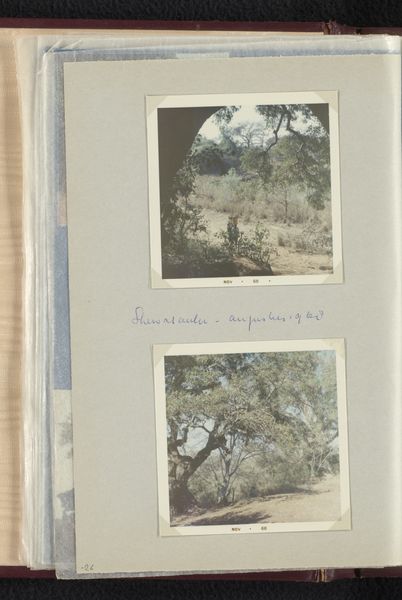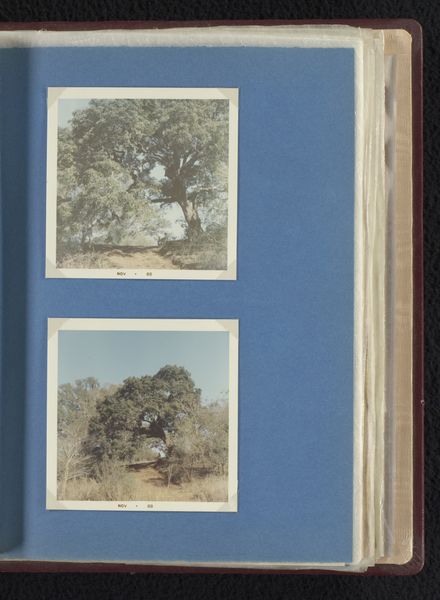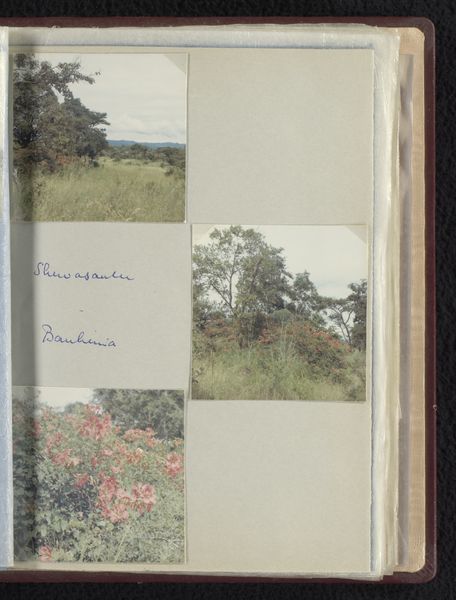
photography
#
landscape
#
street-photography
#
photography
Dimensions: height 240 mm, width 190 mm
Copyright: Rijks Museum: Open Domain
Curator: We're looking at "Woonhuis van Willem van den Berg in Shewasaulu, Zuid-Afrika," a 1967 photograph by Willem Jacob van den Berg. It seems to capture a home in a South African landscape. Editor: You know, seeing these little snapshot glimpses just gives me the feeling of warm sunlight and faded memory, like uncovering someone's old photo album. The hues feel gently bleached out; very evocative of that era. Curator: The photographs certainly carry a patina of time. The architectural design hints at adaptation to the environment. Notice the long, low structure and what seems like generous veranda space to offset harsh sun. Do you see any visual clues, hidden or explicit? Editor: Oh, totally! It’s a world that breathes a bit differently than ours, isn't it? What fascinates me is how architecture functions almost as a silent autobiography in places far from its creators. Even something as humble as these snapshots evokes themes of settlement, home-building and transformation. The house seems almost engulfed in vegetation which is interesting. Curator: An apt observation. Houses have historically served not only as shelters, but also emblems of aspirations, defenses against an unfamiliar landscape. Look closely, there's also the detail of the single animal figure down below: an animal roaming within. Editor: Oh my, is that a goat, perhaps? It makes me wonder about co-existence: about living within boundaries that expand from our structures toward the boundless, right into something much bigger than what one usually sees in landscapes and architecture. They exist as extensions of consciousness, even if unconscious. I love this interplay! Curator: Absolutely. And, regarding the framing, there is much to unpack, particularly how photographic placement on album pages shapes collective stories through their carefully curated selections and organization. The image of the house within it carries powerful significance tied not only with landscape elements, but within human interaction and cultural narrative as captured. Editor: The way they're situated kind of invites us to ask— what makes a photograph into more than the sum of its parts? Is there a ghostliness here? I could definitely muse for hours about all of these notions about meaning and home! Curator: Precisely my sentiment, so poignantly preserved here for a continuous reflection and discovery. Editor: Cheers to that.
Comments
No comments
Be the first to comment and join the conversation on the ultimate creative platform.
